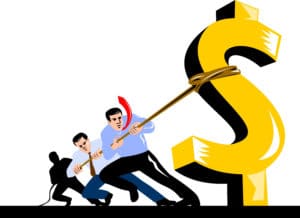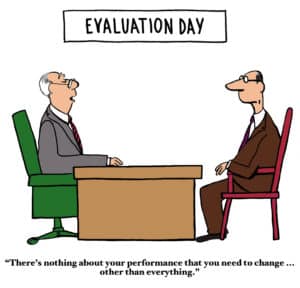— Yours may be “0”
Picture the Amazing Kreskin with an envelope pressed against his forehead (if you’re wondering “who the hell…” ask someone old).

I’ve been asked by several leaders and managers, “How in the heck do I reward today’s performance, motivate future performance and retain those same performers with a meager 3.0%??
My answer…? “You don’t.”
Here’s a recent WSJ article that speaks to this in a small degree. Sorry, you are probably not getting a raise next year. My favorite line:
“40% said they would reduce or eliminate raises for low performers.”
Somehow, this is cutting edge thinking. Are you freakin’ kidding me?? Listen up: if you’re still giving raises to low performers while wondering how to budget money for high performers… well, that’s an I.Q. test, and you’re not doing well.
No one – and certainly not higher performers – will feel very rewarded or motivated by receiving a 2-4% increase in base salary. What…? Then why, Kevin, did you tell me to increase by 3.0%??
Short answer – I didn’t.
I told you that payroll would increase by 3.0%. How you allocate that increase is an entirely different matter. Let me make a bit of an unusual suggestion…
Average performers should receive slightly less than the 3%, unless the market range for their position has truly moved. And that doesn’t happen like the clockwork of annual increases. Make sure you know the market, and decide accordingly.
Sub-average, even slightly sub-average, performers should get 0%.
Zero. Nada. Nothing. Bupkus.

If their performance trend is improving, comfort them, let them know you’re watching them closely, and hope to be rewarding them with their own pay raise soon. They aren’t yet doing what they’re paid to do, but they’re making positive progress.
For those with a negative performance trend today, tell ’em to pound sand. Not only do they get the goose-egg for an increase, but we need to be making motions to help them get better, or help them get out. The adage holds true… If you aren’t fired with enthusiasm, you may be fired with enthusiasm. Do the job you’re paid to do – all of it.
This shouldn’t be an extraordinary expectation.
You can’t afford to placate marginal performers at the expense of your high performers. Why would you even consider that? Speaking of high performers, we haven’t addressed those yet; what do we do?
For those truly high performers, realistically no more than 5% of your workforce (and quite possibly less), we consider 7-10% increases to base compensation, assuming we have at least some room within our compensation scheme.
That’s right, as much as 2X or more of the scheduled payroll change for these hard chargers.
And we calculate these top players first. Before we even look at our average and below, we determine how much we need to provide these broad-shouldered business-makers. When we’ve done that – parceled out to those most deserving – then, and only then, do we take a look at the masses.
They get what’s left over. Some won’t even get some of that (see above).
Unusual approach? Maybe. Harsh? Depends on who you are, now, doesn’t it?

With only 3-4% to play with each year, it’s likely that someone may be unhappy with their “share of the booty” (never able to use a pirate metaphor until now); who, exactly, would you prefer to be upset…?
Arrrgh! (in my best pirate voice)
My vote’s on the low-performers.
Just think about it. That’s all I’m asking.

